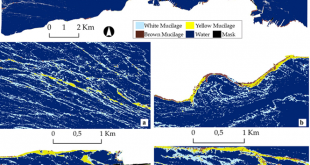FRESENIUS ENVIRONMENTAL BULLETIN, cilt.26, sa.1, ss.84-92, 2017
An Auxiliary Tool For Landscape Evaluation: Ecological Risk Analysis Based On Analytic Hierarchy Process
Aksu G. A. , Musaoğlu N. , Uzun A.
Abstract: Ecological Risk Analysis may be used as an auxiliary method in making landscape planning and management decisions. However, both choosing the subject criteria of the analysis, and assigning values to such criteria are all left to the discretion of the decision-maker. Ecological Risk Analysis is therefore ranked as a qualitative mode of assessment. What was intended herein was to rule the Ecological Risk Analysis, which may significantly contribute to the assessment of a landscape, out of being a qualitative mode, and to turn it into a semi quantitative means of assessment. In order to turn the Ecological Risk Analysis into a semi-quantitative mode of assessment, Analytic Hierarchy Process was resorted. Main criteria (vegetation, soil, water, and bioclimatic comfort) to determine the “Ecological Value”, and the sub-criteria to set forth these criteria were decided upon. These criteria were then overlaid by means of matrices within the scope of the Analytical Hierarchy Method, weight ratios thereof were determined, and the consistency ratios thereof were calculated. Risk maps of the main criteria further superimposed according to the weight ratios, which had been calculated to be consistent, the Ecological Risk Map was thereby attained. Areas with high ecological risk value are located at the west and northeast part of the research area. Regions were discussed in the frame of landscape planning and sustainability depending on risk levels.

 UHUZAM İTÜ – Uydu Haberleşme ve Uzaktan Algılama UYG-AR Merkezi
UHUZAM İTÜ – Uydu Haberleşme ve Uzaktan Algılama UYG-AR Merkezi 